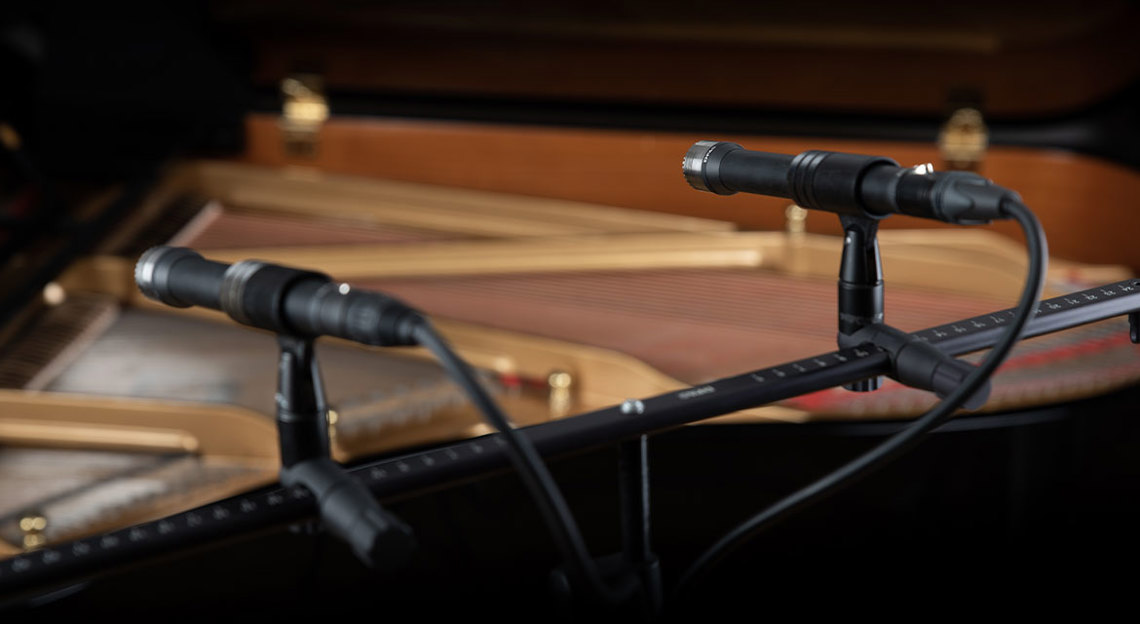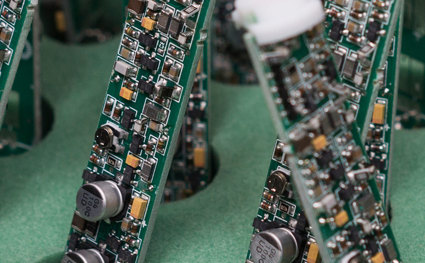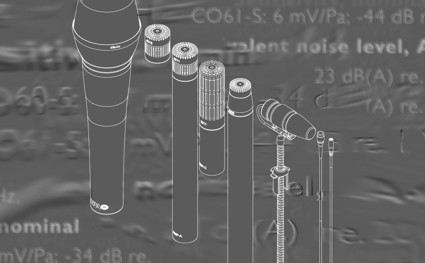The difference between matched and selected microphones
Carefully-matched stereo pairs and surround sets are key to successful stereo or multi-channel recordings.

When selecting microphones for stereo or multi-channel recordings, it is crucial to ensure that the frequency response and sensitivity are virtually identical. Carefully-matched stereo pairs and surround sets are key to successful stereo or multi-channel recordings.
What's in a match?
When DPA matches a stereo pair from the 4000 Series, two microphones are individually custom modified by qualified personnel and measuring equipment to perform within a very narrow tolerance. Parameters like diaphragm tension, grid or net placements, and electrode polarization can be altered. Microphones are matched with regards to both sensitivity and frequency response in the microphone’s entire stated frequency range. A matching curve is delivered with the microphones.
Tolerance and deviation of matched mics
The 4000 Range of mics is always manufactured within tolerances of ±2 dB. This means that these microphones should perform within the same tolerance range, e.g. a frequency range from 20 Hz to 20 kHz with a deviation of maximum ±2 dB.
However, when matching for dual-channel stereo or 5-channel (or higher) surround, the microphones are selected in sets, which provides a narrower tolerance. This is done to obtain consistency of sensitivity and timbre. Proper documentation accompanies each set of matched Recording Microphones.
If the frequency response exceeds the tolerance limit, the microphone should be rejected. In theory, a 4 dB difference at a certain frequency is possible and permitted. In practice, however, it is exceedingly rare.
Some manufacturers state that all their microphones are matched to make a stereo pair. As long as they are within the individual frequency response tolerance; this is not the case. If the tolerance is ± 2 dB, there may be a 4 dB difference at some frequencies: What is not passed on to the user is how the microphones may differ in frequency response within the range.
A single microphone can be chosen for its linear and natural response, but a certain frequency character might also be the reason behind a particular choice. When a number of microphones are set up to cover an acoustic field, you do not clearly hear the individual response – what you hear is rather a possible difference between the microphones.
Demand documentation
Expect documentation from the manufacturer as to how well the microphones are calibrated. At DPA Microphones we match pairs that are identical within an extremely narrow tolerance and substantiate this info with a matching curve.
Note that even though one microphone has a subtle and intended high frequency rise, the matching curve is horizontal. This shows that both mics have the same high-frequency lift. Individual microphone linearity is not necessarily the issue here; we are looking for consistent and identical responses across microphones.
Check your stereo mics
Grab your favorite stereo pair and place them as close as possible in the same spot. Gain them equally, sum them to mono, and invert the phase on one of them. With an ideally-matched pair, you should not hear anything. If you do hear something, you hear the difference between the mics.
There might be a level difference, which is one point where microphones may not make an ideal pair. Also on sensitivity there is a production tolerance and thus a reason to keep an open eye on matching accuracy.
Surround kits
For standard surround microphone kits containing five or more of the same microphone, it can be a challenge to maintain a sense of perspective on sensitivity and frequency differences. A reasonable method to prove that the surround kit will be perceived as identical is to show a frequency-difference curve to the mean-of-set frequency response.
When combining two types of mics for a surround kit (for instance 3 x 4006A and 2 x 4011A), each type is compared to each other and a frequency-difference curve to the mean-of-set frequency response is presented for each type.
DPA's matching tolerances
To ensure a neutral and vivid sound image and a realistic multi-channel audio experience, each microphone in DPA’s stereo and surround kits are individually calibrated to meet these extremely precise matching tolerances. Matching tolerances are applicable within the microphone’s entire frequency range.
What's in a sensitivity selection of miniature capsule based microphones?
The procedure regarding the miniature capsule based microphones is a bit different. First, before two microphones are chosen for a selected stereo pair, the sensitivity of a batch of microphones is measured. When the microphones perform within a given tolerance, all microphones from this batch are accepted for a sensitivity selection.
The miniature capsule based stereo pairs / kits are selected from sensitivity @ 1kHz. This includes ST2006C, ST2011C, 4099P, and SMK SC4060 / 4061. No matching curves are delivered with these kits.
DPA's selecting tolerances









